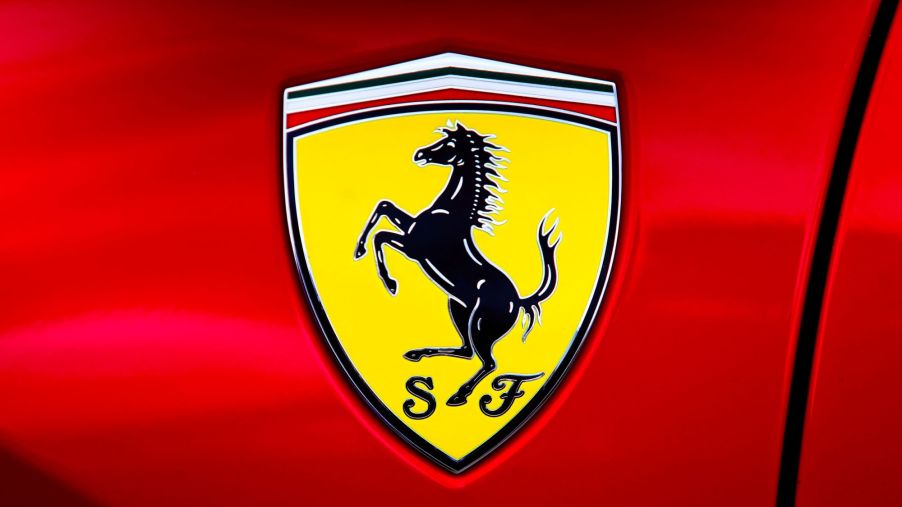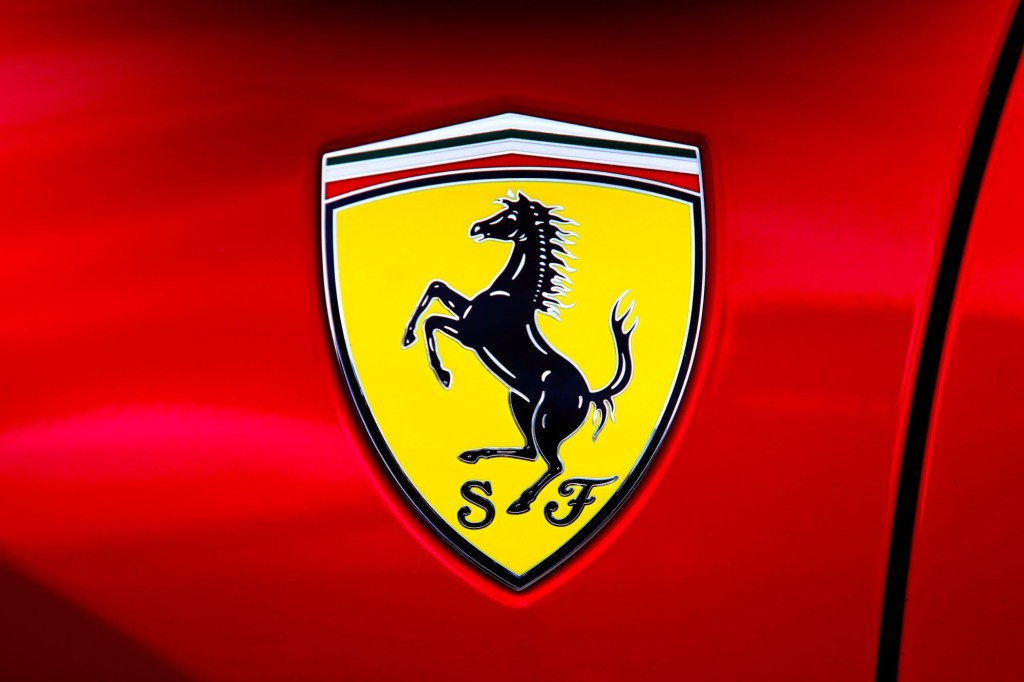
Ferrari Models – How to Tell Them Apart
Ferrari was initially an offshoot of Alfa Romeo, developing cars specifically to participate in auto races. The automaker created many timeless racecars throughout the 50s-70s, such as the iconic 500 TRC and 312 P. Consumers could eventually get their own Ferrari models, like the 1968 365 GTB/4 Daytona.
Even modern Ferrari models are still prevalent today, like the SF90 Stradale or F8 Spider. While most of them have some styling cues from previous generations, they blend in with modern supercars today. Let’s look at some of the best Ferraris ever made and how we can tell them apart from their rivals. But, how many different models of Ferraris are there?
Ferrari has dozens of models on CarModelsList, and even the earlier cars are still highly coveted today. The Ferrari 250 GTO was one of the most capable racers of its time, powered by a 300-hp V12. Its tube-like frame made it more aerodynamic on the track, even beating classic Shelby Mustang models. Only 39 of these cars were ever built, each one valued at over $40,000,000 today.
The Ferrari California T showcased a more modern body style and was primarily made to be a daily driver. Still, it puts other easy-going sedans to shame with its 552-hp V8 and dynamic handling abilities. It’s also relatively affordable compared to other Ferraris: you can find a used model from 2017 for around $170,000-$180,000.
The Ferrari 488 Spider is another modern entry, complete with a folding hard-top and twin-turbo V8 engine. This is also one of the few Ferraris to offer Apple CarPlay.

What is the most popular Ferrari model?
It’s hard to pin down which Ferrari has made the biggest impact on the automotive world. Goodwood shows us ten worthy contenders, starting with the 275 GTB Rally Car. Ferrari’s first car was complete with an independent suspension, V12 engine, and vacuum-assisted disc brakes.
The Ferrari 500 TC was lighter and made less horsepower than the GTB Rally Car to comply with new racing codes. Still, it had a top speed of 150 mph and managed to win many races. The Ferrari 365 GTB/4 Daytona would come next. It’s the first one crafted with the Pininfarina body style. It also got a massive boost of power over the 500 TC, producing 347 hp.
Around the same time, the Ferrari Dino 246 GT entered production. Its engine was tweaked to be even more ferocious, and it’s one of the most opulent examples of the new body style. The Ferrari Testarossa got even more interesting design elements, including big side intakes and pop-up headlights.
The Ferrari F40, released in 1987, highlighted the automaker’s 40th anniversary. It’s widely considered the first modern supercar, with 471 hp on tap and a body constructed with carbon fiber panels. It would pave the way for the desirable Ferrari Enzo models, which have more downforce than any other Ferrari before them. The Ferrari Enzo’s massive V12 can make 660 hp and accelerate to 60 mph in only 3.2 seconds.
It also has Brembo carbon fiber brakes that would later be implemented on the Ferrari 360 Challenge Stradale. This model got more horsepower and a better weight ratio, improving its track performance.
The Ferrari 599 Manual is one of the most memorable Ferraris due to its unique transmission. It’s the last one with the traditional setup of a gear lever and three different pedals, paired with a 615 hp engine.
The Ferrari 458 Speciale made less horsepower, but it could still reach the 60 mph mark in a clean three seconds. Thanks to its upgraded slip-angle control, big rear spoiler, and intake flaps, this model was one of the best racers.
What is the fastest Ferrari?
The fastest true Ferrari is either the 2013 LaFerrari or 2013 Berlinetta. The former was limited to only 499 units, each one costing $1,690,000. It came standard with a V12 engine capable of 800 hp and 516 lb-ft of torque, plus a seven-speed dual-clutch automatic.
The LaFerrari also comes with an electric motor that makes it more environmentally friendly and ups its horsepower to 963. That gives it a top speed of 217 mph, and it can reach the 60 mph mark in only 2.8 seconds.
This Ferrari also has enhanced traction control, differential damping, and the same regenerative braking on several other sporty EVs. At the front, the LaFerrari sports 19-inch wheels and a double-wishbone suspension. The back end multi-link rear suspension and 20-inch wheels.
The Berlinetta is slightly less powerful with 730 hp, but still manages to reach 60 mph in 3.1 seconds. According to Car and Driver, the standard AWD also gives this Ferrari considerably better launching abilities. It’s also relatively more accessible than the LaFerrari, with an asking price of $330,000.
There is one quicker Ferrari out there, but Edo Competition modified it. Its upgraded V12 makes 950 hp and boasts a top speed of 245 mph.
The 3 cheapest new Ferraris
Even the cheapest Ferraris are capable of jaw-dropping speeds and have the same iconic architecture as their legendary predecessors. According to SuperCars, the most affordable model is the 2020 Portofino, inspired by the California T. You can buy this fancy tourer for only $215,000.
That price includes a twin-turbo V8 engine capable of 591 hp and 561 lb-ft of torque. It can reach 60 mph in 3.4 seconds, only slightly slower than models retailing for $100,000 more. It’s definitely not the fastest Ferrari available, but its top speed is still a respectable 199 mph. Its performance is also aided by Brembo ceramic brakes, electronically assisted steering, and adaptive dampers.
The interior is also quite fancy by Ferrari standards, likely to keep up with demand from today’s tech-spoiled drivers. A 10.3-inch infotainment touchscreen is included, and a handful of safety features are available. The luxurious leather seats can be had with neck-warming pads and ventilation.
For just $10,000 more, you could buy a Ferrari Roma. The positioning of the headlights is slightly lower on this model, giving it a menacing shark-like stare. It’s also more powerful than the Portofino, producing 612 hp and 561 lb-ft of torque. Speed specs remain on par with the Portofino, but it has an elevated rpm of 5,000.
It also has a slightly different interior layout compared to many of its siblings. Drivers are faced with a 16-inch digital gauge cluster and get a useful, but tiny, center console. Both front-seat passengers also get their own infotainment screens equipped with Apple CarPlay, satellite radio, and navigation.
The Ferrari F8 Tributo veers into the pricier territory, retailing for around $277,000. However, it’s also the most powerful of the three, capable of 710 hp and 568 lb-ft of torque. It’s one of the quicker models with a top speed of 211 mph and reaches 60 mph in under three seconds.
As you might have gleaned from its name, it’s based on the Ferrari 488 GTB and shares the same platform. Its engine produces the same amount of power as the GTB, but it actually gets its peak torque more quickly. The Tributo also differentiates itself with an aero kit that provides new 3D-printed carbon fiber exterior elements. The body styling and headlights are also unique to the F8 Tributo.
What are the 2 most expensive Ferrari models?
Most Ferraris fall into an unattainable price range, but JamesEdition says the most expensive one is the LaFerrari Aperta. Listings on the site value this particular Ferrari at $4,733,647. However, its most expensive auction ended with a winning bid of nearly $10 million.
It has the same performance specs as the standard LaFerrari, but this one comes with a removable roof. It’s available as either a soft or hard top, the latter made from genuine carbon fiber to keep the vehicle light. It also comes with a new aero kit and a lowered underbody, giving it even better handling and downforce.
Another scarce and expensive model is the Ferrari FXX-K. These cars are usually only reserved for track events, but some are occasionally sold for around $4,170,188. Even though it’s cheaper than the LaFerrari Aperta, it’s insanely more powerful with 1,035 hp.
The K stands for the vehicle’s kinetic energy recovery system, which converts the energy lost by braking to more standby power. While its speed specs aren’t available, TopGear says it completed its test track run in five seconds less than the LaFerrari. Only one of these models is street-legal, and that was only made possible with extensive modification.
How to tell Ferraris apart
Virgin Experience Days say it’s easy to tell all these Ferrari models apart with just a few observations. All Ferraris have tubular body shapes, but you can also distinguish which model it is from the back end. For example, the F430 Spider looks like it has a friendly grin with the pony badge in the middle.
In contrast, the LaFerrari has more swooping angles and curves at the rear. Some Ferraris look like they’ve taken some inspiration from other supercars, as seen by the taillights on the Ferrari California.
The front air intakes are also one of the most prominent features of any Ferrari. If they’re placed on the side of the grille, the car is probably some kind of F30 or 360 Modena. Some Ferraris have one long intake bar that might be split down the middle, like the one on the LaFerrari.
Ferrari models are more difficult to differentiate based on side air intakes, but some of them are dead giveaways. Ever the overachiever, the LaFerrari has the biggest of them all. The ones on the 430 Spider and 360 models are located towards the bottoms of the doors. The Ferrari Berlinetta is the only one that doesn’t have any side air intakes.
Most Ferraris also sport the same angular headlights, though some of them may have slightly different placements. Some of them have rounder curves, such as the ones on the 430 Spider and California cars. Older models like the Ferrari F40 have retro pop-up headlights.
As for the taillights, both sets usually have their own housing on each side of the back end. The Ferrari California is easily recognizable from the back because of its unique reverse light placement. However, since many Ferraris have identical taillight designs, this can be the hardest difference to detect.
Fortunately, there’s more variety from the placement of the rear exhausts. Most models have two horizontal pipes on each side, but California vertically showcases its pipes. Then there’s the Ferrari F40 and 458 Italia, which both have three exhaust pipes in the middle of the rear.
Pretty much all Ferraris have identical front badges, but subtle bonnet shape differences set each one apart. Some bonnets go all the way to the headlights while some taper off toward the badge.
You might need to study various Ferrari pictures closely to master the art of spotting the differences. Fortunately, no Ferrari is an eyesore to behold.


